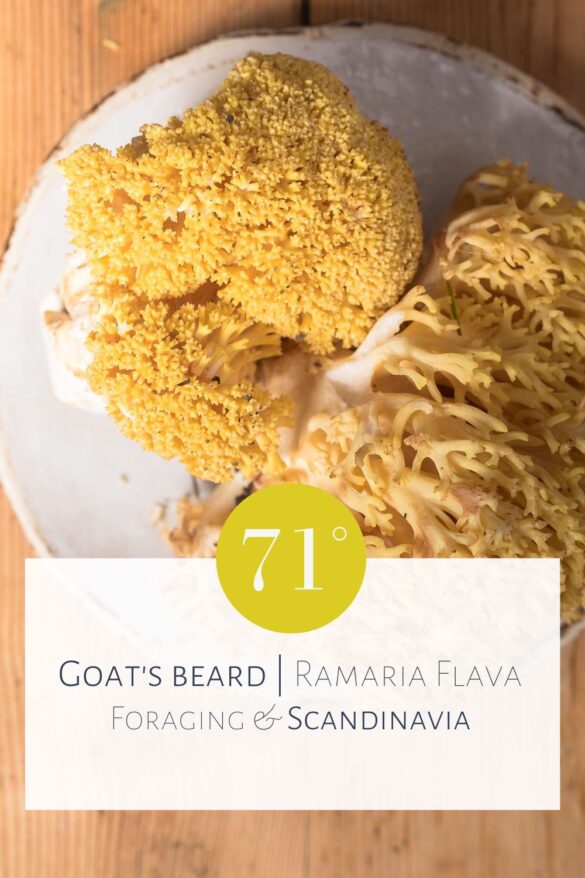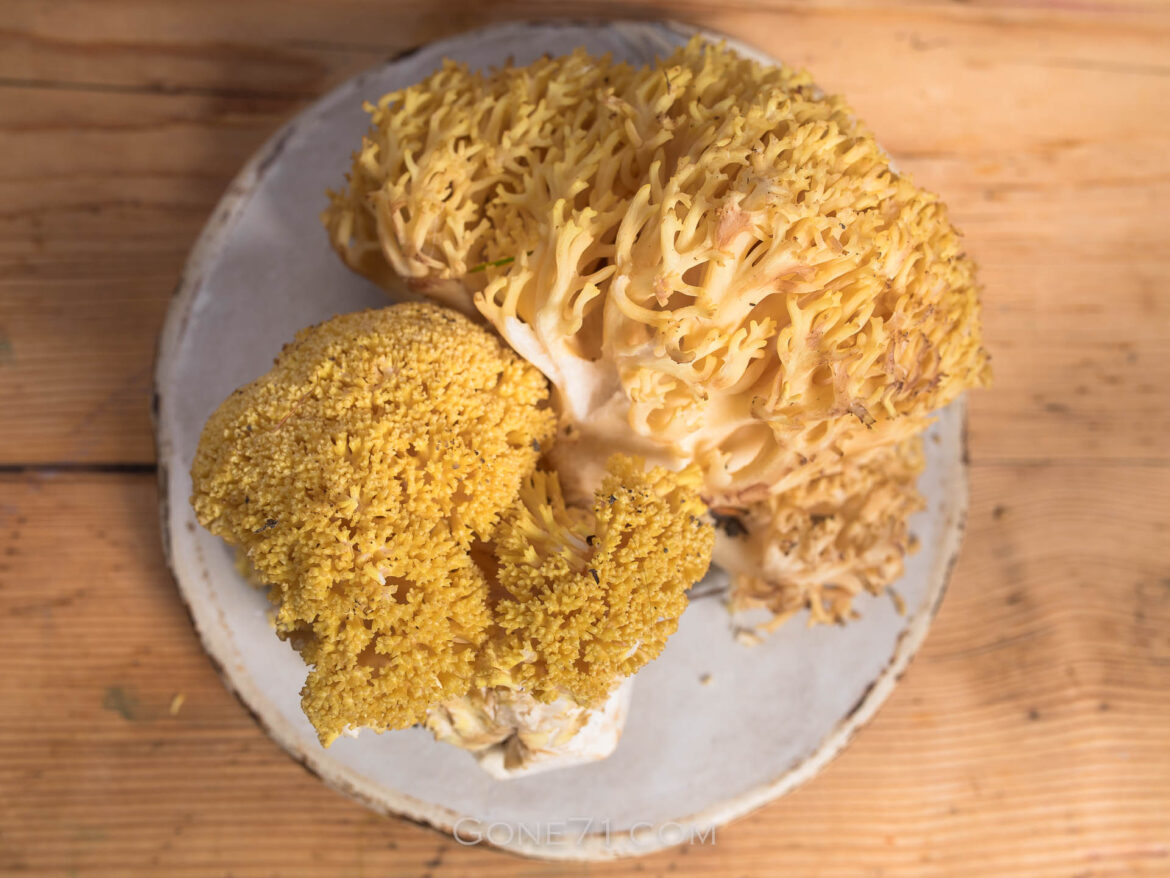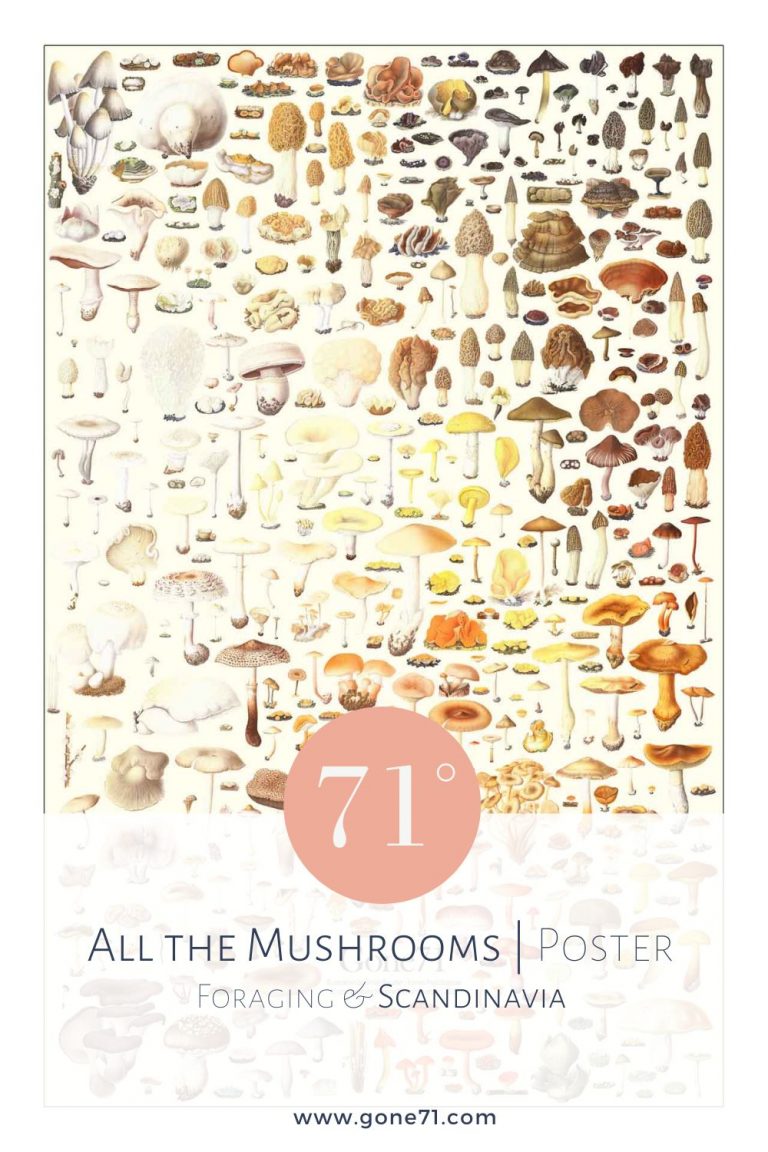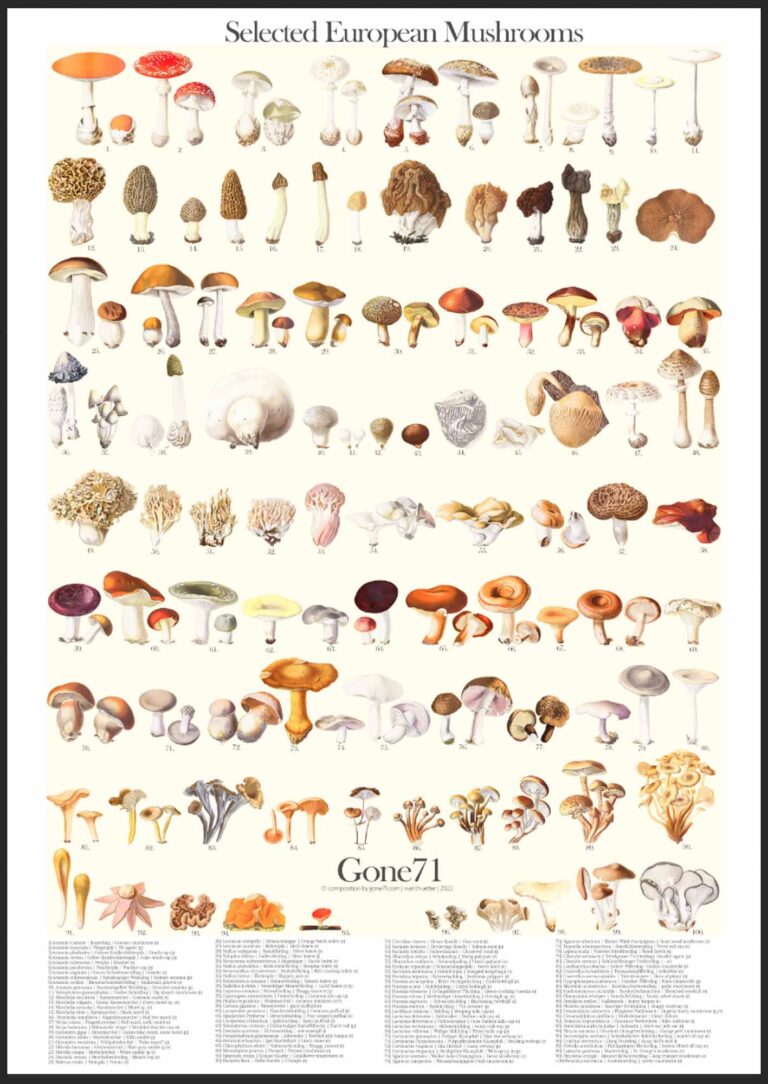swe.: Gul fingersvamp | nor.: Gul korallsopp | fin.: Keltahaarakas | dt.: Gelbe Koralle, Zitronengelbe Koralle, Ziegenbart | sci. syn: Clavaria aurea, Ramaria flavobrunnescens sensu
Goat’s beard is probably the best known mushroom coral. However, identification is not always easy and many experts advise against collecting and consuming this mushroom due to the risk of confusion.
While we can identify this fungus in our area, we find it less appealing than its golden-yellow relative, R. aurea, due to the potential for confusion with other species. We therefore do not want to encourage anyone to collect this mushroom. Mixing them up can lead to severe stomach upset and health issues. In terms of taste, however, it has quite similar qualities like the golden coral (R. aurea). Unless you do not cook it like we did, that is!
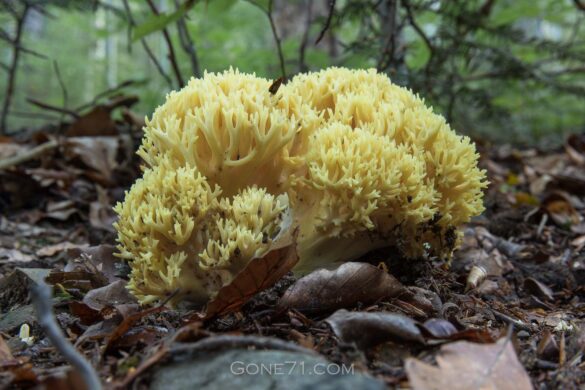
Only harvest mushrooms that you can identify with 100% certainty! The consequences can be life threatening if you are wrong. If you have the slightest doubt: do not eat the mushroom! This is not a mushroom guide! For correct identification consult a mushroom expert.
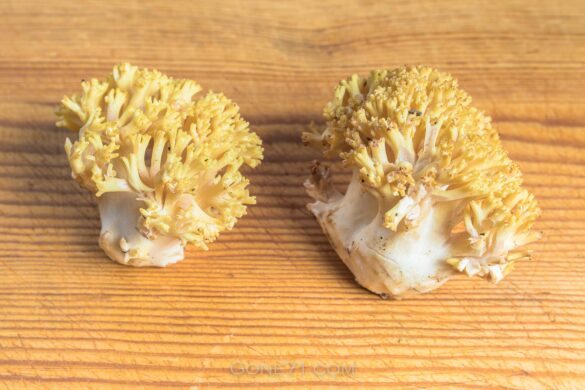
Appearance & habitat of the goat’s beard fungi (R. flava)
Where to find the goat’s beard fungi (R. flava)
Because of their characteristic appearance, coral fungi are easy to spot in the forest. R. flava is particularly common in deciduous forests (beech trees) in combination with calcareous soils. In some areas it is considered very rare. In my area in Central Europe it is a very common mushroom in autumn.
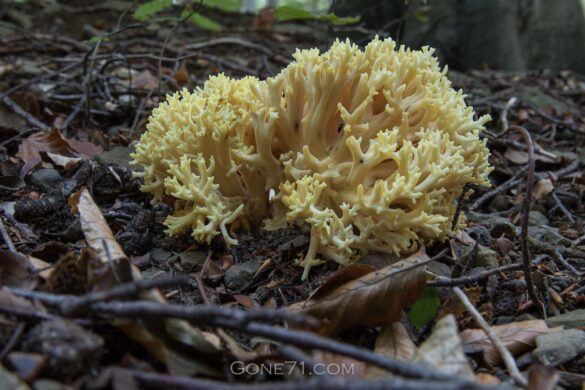
Appearance of the goat’s beard fungi (R. flava)
Goat’s beard is usually yellow or lemon yellow, with the individual branches growing from a white stalk. With age, the color can become slightly lighter and have a sulfur yellow color. The individual fruiting bodies can have a diameter of more than 20 cm. The flesh is (grayish-)white.
diameter: Fruiting bodies up to 25cm
months: July – October
colour: yellow
habitat: beech, pine, spruce
taste (raw): neutral, slightly bitter
consumption: cooked (poisonous raw)
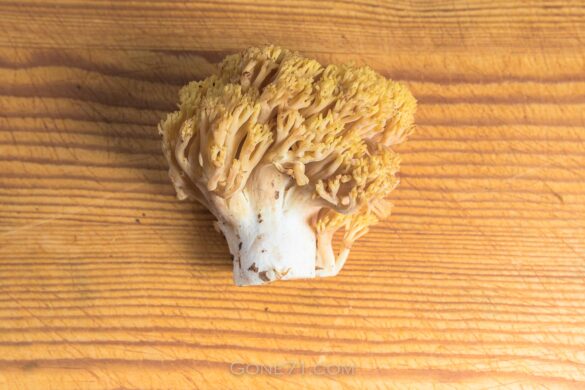
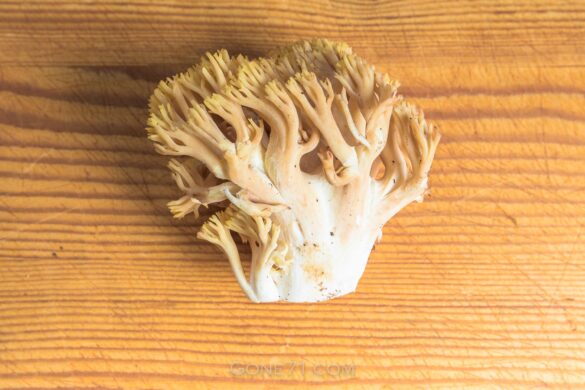
Confusion of the goat’s beard fungi (R. flava) with other coral mushrooms
The most common confusion happens with the golden coral fungi (R. aurea). These two species have long been considered one and the same species – R. flava.
A distinctive feature is the stem that tends to be more yellow in the golden coral while Ramaria flava has a more whitish color. The goat’s beard also has a significantly lighter yellow color that is more reminiscent of lemon yellow. I have also found these mushrooms growing close together and in direct comparison the differences are then easier to recognize. The good thing is that R. flava is also one of the good edible mushrooms and a mix-up would be harmless.
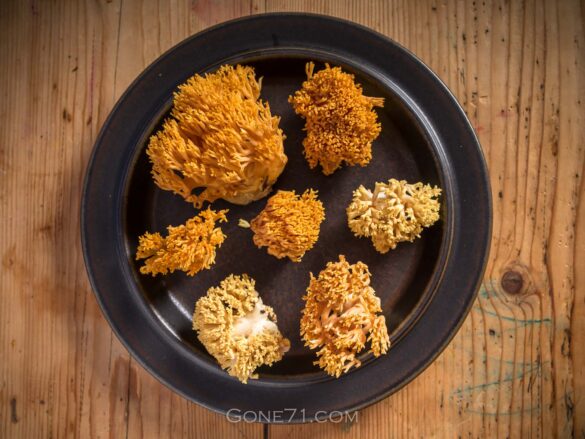
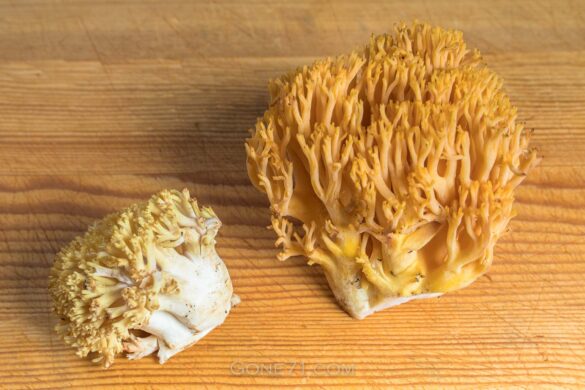
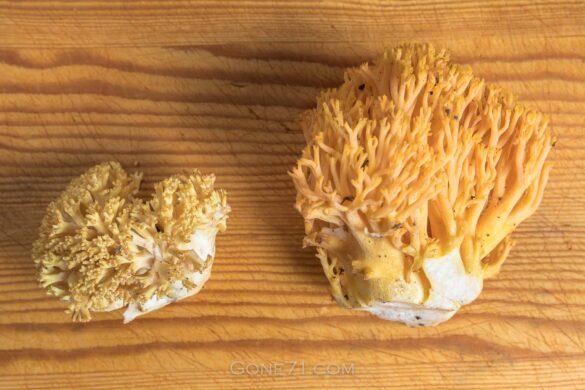
Confusion of the golden coral with R. flavescens and others
Coral mushrooms and the problem with the fading colour
Similar to the golden coral, the goat’s beard fungi slowly loses its yellow color after harvesting. This can be problematic for a later macroscopic determination. The mushroom pictured below was in the fridge overnight and has changed a lot in colour. Therefore, only fresh fruiting bodies should be used for determination.
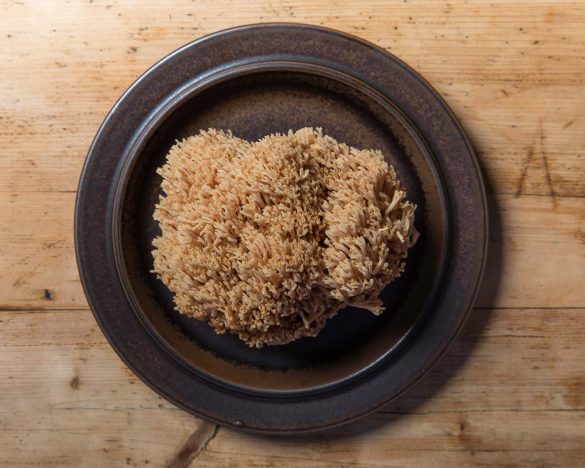
The goat’s beard fungi (R. flava) in the kitchen
In this case, we really wanted to know and tried a steamed coral based on a historic McIllvaine recipe. We thought it would be nice to keep the shape of the mushroom whole, similar to a steamed cauliflower or broccoli.
“[…] stew, covered with a little water, over a slow fire for half an hour. When done add cream or milk, a little flour, plenty of butter and season with pepper and salt. Salt last, always, or it will harden the plants [sic!]. Mcllvaine, 1901″
We steamed the coral in a pot for 30 minutes and then seasoned it with salt. At this point I have to admit that this was probably the least convincing mushroom dish I’ve tasted in my career and I can’t recommend anyone to repeat it. Well fried or baked with egg, it is very good how ever. See our recipe for the golden coral (R. aurea) or also the cauliflower mushroom (S. crispa).
Note that coral mushrooms can contain high levels of oxalic acid, which can cause nausea when raw. Make sure to cook well!
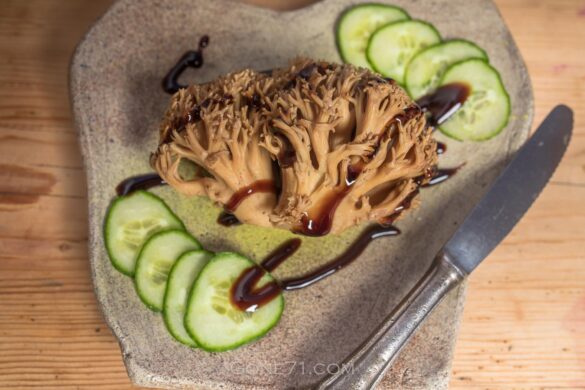
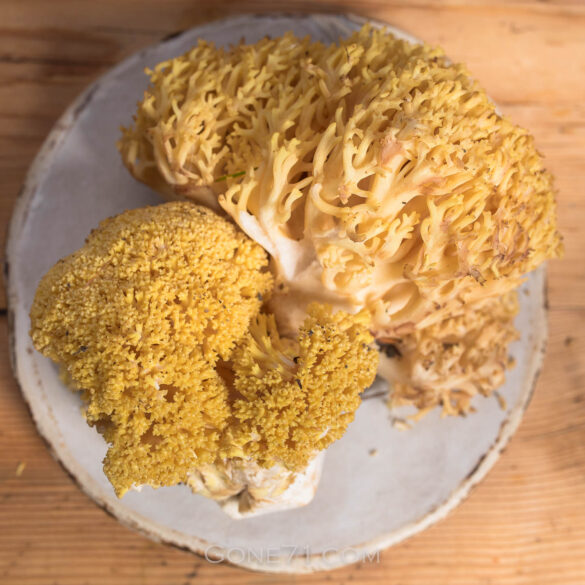
Steamed coral mushroom (R. flava) – a failed experiment!
Ingredients
1 decent sized goat's beard fungi (R. flava)
salt, pepper
olive oil
additionally
milk
flour
butter
Instructions
The basic recipe is straight forward - steam the mushrooms in a small pot (with lid) with a few inches of water for about 30 minutes.
After that we seasoned it with salt and pepper and a bit of vinegar dressing.
McIlvaine's original recipe goes on to say that you mix the liquid after cooking with flour and then add butter and milk or cream. Since we don't eat dairy products, we skipped this further step. Anyone who wants to can try it of course. However, we doubt that the culinary experience will be significantly increased by this 😉 We think there are better ways to prepare this mushroom.
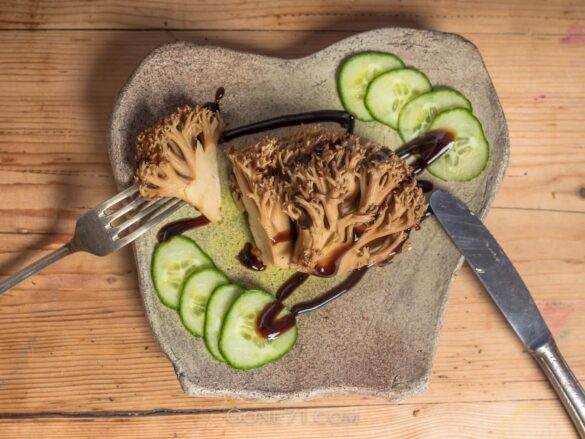
We have compiled this overview with the best of knowledge and belief, but do not claim to be complete and reserve the right to make errors.
Learn more about poisonous mushrooms and mushroom poisons here
↓↓↓
Find some inspiration in other mushroom recipes
↓↓↓
